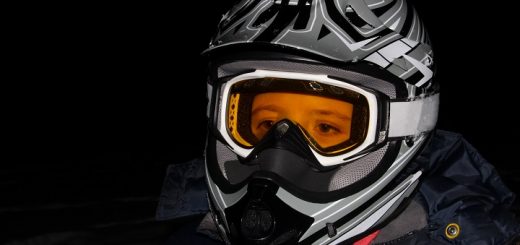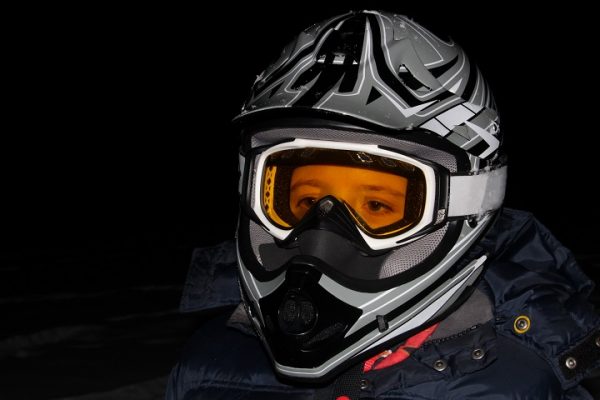What to Look for When Buying Kids ATV Helmets

ATV stands for all-terrain vehicles. They are motorized vehicles that come with oversized low-pressure tires. They are designed for off-highway work, uneven surfaces and recreation. They can weigh up to 6000 pounds and they can reach top speeds of 75mph. They can be three or four-wheeled. Their engine size ranges from 50 ccs to an estimated 660 cc. It is popular with kids today who account for the most riders and unfortunately, the most involved in ATV accidents. Safety procedures must be taken especially by the youth when riding an ATV and the first important safety feature is a Kids ATV Helmets.

Studies conducted on the injuries in an accident which involved an ATV have shown that the kids are the most injury prone. One-third of all ATV fatalities from 1982 to 2002 were of youth under 16 years. ATV operators under 16 years are nearly four times more likely than ATV operators over 16 years to experience an injury requiring emergency department treatment. From 1995 to 2003,404 249 youths less than 20 years were injured in ATV crashes and treated for nonfatal injuries. Among all these statistics the one that stands out is that helmets prevent nonfatal head injuries by 64 percent. Helmets may reduce the risk of death by 42 percent. Among the associated factors of ATV injuries of youth under 16 years, the first is the poor use of a helmet. From all of these, it is safe to say that a helmet may be the difference between life or death and nonfatal injuries. We are losing too many youths and having too many nonfatal injuries which can all be avoided by always wearing a simple helmet. The importance of a helmet cannot be overstated.
Several factors are considered when choosing Kids ATV Helmets. These factors are
- Performance rating; this rating is usually stitched on the inside of the shell and in the box. The first rating is the Department of Transportation (DOT) that shows the helmet meets a certain set of standards as a legal helmet for street and off-road use. The second rating is the Snell rating, which goes beyond the DOT standards and can withstand even harder blows. Most ATV demands nothing less of a Snell rating, though the higher the rating the more it costs.
- Looks; as with everything we wear, looks are considered when selecting a helmet. No one wants to look ugly and everyone has his own choice of good. Fortunately, there are many styles and designs to choose from in your price range.
- Size; it is obvious that there are many sizes for different people. Finding the helmet that fits is important. It should not be too tight that one cannot swivel the head, but also not too loose that is leaning to one side. It is too big if you can pull the helmet on without having to spread the helmet, and will not fit right. A properly fitting helmet will seem tight when you put it in on. This is because of the foam component that seals out the wind noise to conform to the head. If you pull it on too easily without resistance of the padding it will be noisy and uncomfortable in the long run. Basically, it should fit snugly; it should be stable when you face up, down, left and right. A quick test would be to find one that fits and wear it for several minutes if it is possible to look clearly in all directions and you are not fatigued physically by the weight of the helmet or by its looseness. If you jump up and down and sway left and right and it stays in one place, then it fits.
- Open face or full face; an open or full face mask usually varies with the activity you will be doing while on the ATV. Before the full-face helmet in 1970, dirt bike riders used to wear plastic mouth guards that strapped onto the bottom of the helmet. The full face helmet eliminated this need and virtually all races embraced the full face helmet by the start of 1980. Today, more off-road riders use the full face helmet more than the open face helmet, because of the extra protections (of the teeth, and chin which are vulnerable in an open face) it offers. ATV riders who opt for open face helmets are typically those who utilize their squad for work and outdoor recreation such as fishing, hunting, ranching or construction. This is due to the increased visibility and access to the mouth while wearing the helmet.
- Visor; the construction of a visor is for durability. You may want a visor that is adjustable to your taste. People mistake that the visor is to shield your eyes from sunlight, but it is made to protect from flying debris from a rider who is in front of you. A Multisport visor should be lightweight, highly protective, and versatile
Other Features include;
- Air vents; they should open for hot or cold weather
- Weight; people tend to go for lighter helmets than heavier ones for long rides.
ATV continues to remain popular among the youth today, particularly in rural areas where there is minimum helmet use. However, we should always remember that a proper, fitting kids ATV helmet could mean the difference between whether your child has a safe ride or one that will have injuries or other worse results. Compare kids atv helmetsop tions on Amazon.


